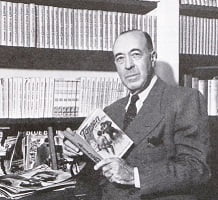
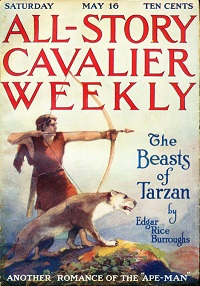 Tarzan, Lord of the Jungle (1951-1952) aired “Jungle Orchids” on April 5, 1951 as the 13th of its 75 episodes. For newcomers, we repeat the introduction to several previous Tarzan episodes, the first from 2009 and the most recent from March of 2021, just over a year ago: From 1932-36 Tarzan on radio consisted of three long-running serials: Tarzan of the Apes, Tarzan and the Diamond of Asher, and The Fires of Toth. Tarzan was played by silent film actor James H. Pierce and Jane was played by Edgar Rice Burroughs’s daughter Joan. Pierce had attended a party held by Burroughs where he met Joan. ERB asked Pierce if would appear as Tarzan in ERB’s next silent Tarzan picture. Pierce replied that he was to appear in another film titled Wings. ERB nevertheless convinced Pierce to become Tarzan and he gave up his role in Wings. Pierce’s role in Wings was then filled by a relative newcomer named Gary Cooper, and Wings would walk away with the first Oscar for what is now known as Best Picture in 1929. Such blow the fickle winds of Fate. On the up side, James Pierce would wed Joan Burroughs in 1928 and they would remain together until their deaths (Joan in 1972 and James in 1983).
Tarzan, Lord of the Jungle (1951-1952) aired “Jungle Orchids” on April 5, 1951 as the 13th of its 75 episodes. For newcomers, we repeat the introduction to several previous Tarzan episodes, the first from 2009 and the most recent from March of 2021, just over a year ago: From 1932-36 Tarzan on radio consisted of three long-running serials: Tarzan of the Apes, Tarzan and the Diamond of Asher, and The Fires of Toth. Tarzan was played by silent film actor James H. Pierce and Jane was played by Edgar Rice Burroughs’s daughter Joan. Pierce had attended a party held by Burroughs where he met Joan. ERB asked Pierce if would appear as Tarzan in ERB’s next silent Tarzan picture. Pierce replied that he was to appear in another film titled Wings. ERB nevertheless convinced Pierce to become Tarzan and he gave up his role in Wings. Pierce’s role in Wings was then filled by a relative newcomer named Gary Cooper, and Wings would walk away with the first Oscar for what is now known as Best Picture in 1929. Such blow the fickle winds of Fate. On the up side, James Pierce would wed Joan Burroughs in 1928 and they would remain together until their deaths (Joan in 1972 and James in 1983).
(Above left: All-Story Cavalier Weekly, May 16, 1914, featuring “The Beasts of Tarzan” – Above Right: ERB, 1875-1950)
(Photo below left: Joan and James Pierce photo cropped to show the left half of their wedding invitation, dated August 8, 1928. From the Danton Burroughs Archive Collection.)
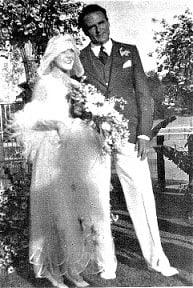 It is impractical to run lengthy serials here, though we have run a few consecutive episodes with specific self-contained adventures. Each of the 1930s Tarzan serials ran to approximately 40 episodes, give or take, and timed out from 8-12 minutes each. There would be a new Tarzan episode in the much longer story arc every two or three days throughout the week. After the trio of initial serials in the 1930s, the Golden Age of radio would produce no further Tarzan adventures until 1951, at which time his new exploits would run from January of 1951 through June of 1952 (and through July of 1953 if one counts syndicated rebroadcasts), when many radio shows were gradually being phased out in favor of television. Lamont Johnson now played the Lord of the Jungle, and in contrast to the earlier 1930s serials (and the famous Johnny Weismuller Tarzan films), Tarzan would speak intelligent English rather than the “Me Tarzan, you Jane” dialogue many have come to think of when the subject comes up.
It is impractical to run lengthy serials here, though we have run a few consecutive episodes with specific self-contained adventures. Each of the 1930s Tarzan serials ran to approximately 40 episodes, give or take, and timed out from 8-12 minutes each. There would be a new Tarzan episode in the much longer story arc every two or three days throughout the week. After the trio of initial serials in the 1930s, the Golden Age of radio would produce no further Tarzan adventures until 1951, at which time his new exploits would run from January of 1951 through June of 1952 (and through July of 1953 if one counts syndicated rebroadcasts), when many radio shows were gradually being phased out in favor of television. Lamont Johnson now played the Lord of the Jungle, and in contrast to the earlier 1930s serials (and the famous Johnny Weismuller Tarzan films), Tarzan would speak intelligent English rather than the “Me Tarzan, you Jane” dialogue many have come to think of when the subject comes up.
“Jungle Orchids” finds Tarzan leading a safari, in the course of which he crosses the path of one Edwena Clark, she of an imperious demeanor who loves her precious orchids more than anything else, her unhealthy obsession with the flower extending beyond its meticulous breeding and maintenance, to the point of physically abusing any servant who displeases her in the care of her beloved flowers. Her obsession has turned her into a mean-spirited, domineering soul, but when she meets Tarzan she masks her harder nature. A friendship buds between Edwena and the Lord of the Jungle, but soon enough Tarzan discovers the real Edwena Clark and severely admonishes her violent behavior. Ignoring the stern reprimands and focused even more narrowly on her blind obsession with the orchids, she brings upon herself a life lesson learned the hard way. Listen now to this fateful tale of something as beautiful as a flower leading to the downfall of a woman who turns her obsession with that beauty into something quite ugly, and learn the story of the “Jungle Orchids.”
Play Time: 25: 54
{“Jungle Orchids” aired on a Thursday evening in early April of 1951, which meant the following day after school the neighborhood gang could be found gathered at the nearby newsstand, poring through pulp magazines for more adventurous tales taking place in jungles, on other worlds, or in sorcerous realms familiar only to inhuman creatures. Jungle Stories (1938-54) fit the bill quite nicely, and a new Ki-Gor tale was always welcome (though not quite the same as an original Tarzan offering, but an acceptable replacement). A quarterly for almost all of its 16 year run, it would manage but three issues in 1951. fantastic Adventures (1939-53) was begun by Ray Palmer as a sister magazine to Amazing Stories, the first “official” SF magazine, with its first issue dated April 1926. While the new magazine began by publishing lighter “frothy” fantasies (as one source categorized it), in its later years it pretty much ran the same basic fare as Amazing. When it folded in 1953 it was folded into Fantastic (1952-80). fantastic Adventures was a monthly in 1951. Weird Tales (1923-54) was the penultimate supernatural horror pulp of them all, attaining cult status as “the unique magazine” and drawing the most sought-after talent the field had to offer for decades. While it never made a great deal of money, it managed to stay alive for over 30 years and now its issues have attained classic status and are eagerly sought by pulp magazine collectors wherever they can be found. WT was a bi-monthly in 1951.}
[Left: Jungle Stories, Spr. 1951 – Center: fantastic Adventures, Apr. 1951 – Right: Weird Tales, May 1951]
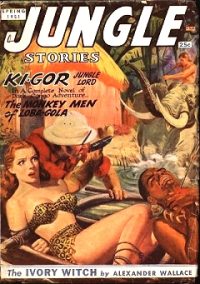
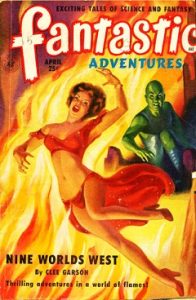
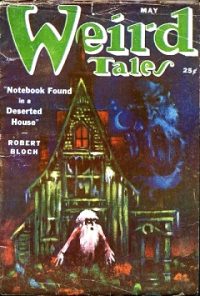
To view the entire list of weekly Old Time Radio episodes at Tangent Online, click here.